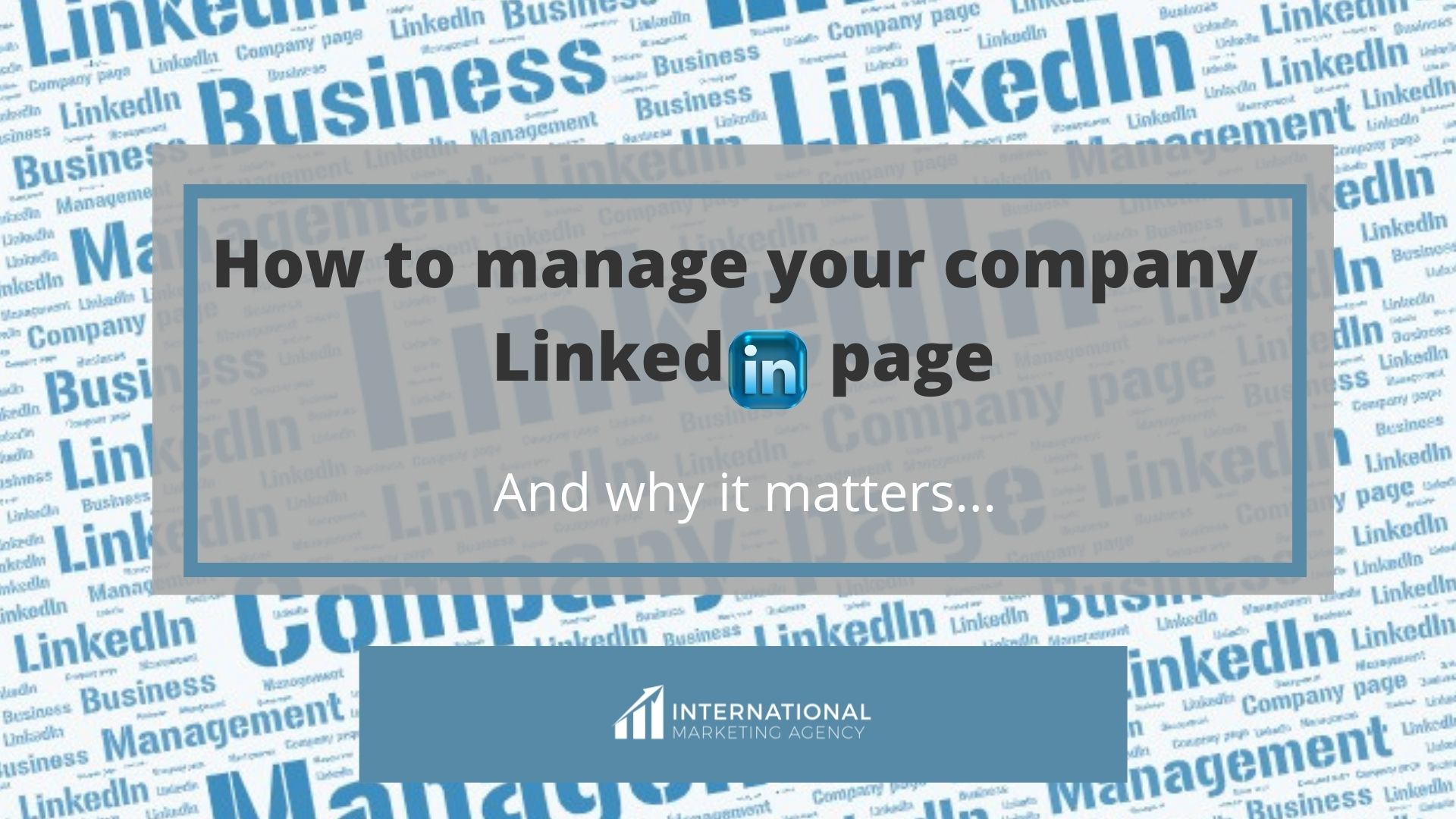LinkedIn company page management

A LinkedIn page is like a personal profile of your company. It’s like a mini-website of your company located in the most visited business location – LinkedIn.
So if you were not sure if you should have a page on LinkedIn just think of it as having a hub page in the busiest business location. How does that sound? Is the reason good enough? If you said yes try adding this to the benefit a company page has to offer. Not only your LinkedIn page will appear when someone types your company’s name in LinkedIn’s search box on the homepage but also your page will appear in Google search results.
Because LinkedIn is a very popular and trusted website, LinkedIn pages rank well in Google. People can view your LinkedIn company page even if they aren’t logged into the site. This will give your company significant exposure.
And not only that, but your LinkedIn page also appears when someone :
- Follows your company and receives status updates,
- Sees your company under Similar pages,
- Views the LinkedIn profile of one of your Employees,
- Receives a notification when your product or services are recommended.
So in order to increase your visibility on both LinkedIn and search engines make sure your company page is complete and you update it frequently with the latest news of your business, niche, or industry.
Going online you can find specific ways on how to optimize your LinkedIn company page in order to grow your business, and if you are in the B2B, let’s go step-by-step how to manage your Company page:
- Define your company page goals.
Having a clear set of goals is the essence of a successful company page. You need to have a clear idea of what your goals are and what you want to see happen.
Will you be helping companies with lead gen and Customer Acquisition strategy or you will be supporting social selling? Are you interested in generating brand awareness to a new audience or just to ensure already imposed brand domination? What are your goals in terms of impressions and engagements and which KPIs will help you to determine? Do you want to keep existing customers engaged with the content and also chat with them?
Even though setting your goals isn’t always as straightforward as it might seem, when you get specific about them that will impact how you structure your page.
2. Understand your target audience
Have you already defined your ideal customer profile and your buyer personas? Pay attention to your followers. This is where you get to see the demographic of who is following your company, how many people organically followed you, and the number of people who engaged in your promotions. You can sort followers by seniority, industry, location, company size, function, and employee/non-employee status. This gives you an insight into professionals who follow your company.
This way you can understand what they want from your platform, or how it can help them solve their problems. You’ll also see Follower trends and even what your competitors do.
3. Expose your product or service to a relevant audience.
When you have a Company Page you can connect with business owners and professionals on LinkedIn through posts, comments, as for the members on the network, a quality page is a treasure trove of information.
It’s a great way to research companies. Not only does it provides detailed information on your company size, office location/s, key executives, product/service offerings, career opportunities, with company pages, but you can also introduce products or services your company has developed and explain how they will help customers to reach their professional goals, meet their business needs, achieve business targets.
4. Offer feedback
When you have a Company page and build your professional network one thing you should remember is that everyone who engages your Page is a human being and treating them that way is what really matters. “People do business with people”.
You need to develop a personal relationship, listen to what people on your Company page say, comment, and use the power of communication and empathy.
In B2B clients want to be dealt with more empathy in a much more humane way. The sales managers are asking open questions and genuinely listen to their prospects, clients. That way they determine the client’s needs, what their struggles are, what their motivation is, and ultimately what their sales profile is.
5. Check your competition company pages
Having a LinkedIn advertising service, this platform is mainly used to distribute content, making it the social media platform used most often. By visiting the company pages of businesses that are supporting your target market, it’s easier to observe changes in your industry and track what your competition has accomplished, identify trends and opportunities for growth areas in your business.
Creating a Company page is a great way to establish your brand, generate leads, share what you do, who you serve, and add value to your overall online credibility. In case you haven’t created one yet, I hope this will encourage you to do so, as it not only showcases who you are but also visitors can learn as much as possible about you online.


